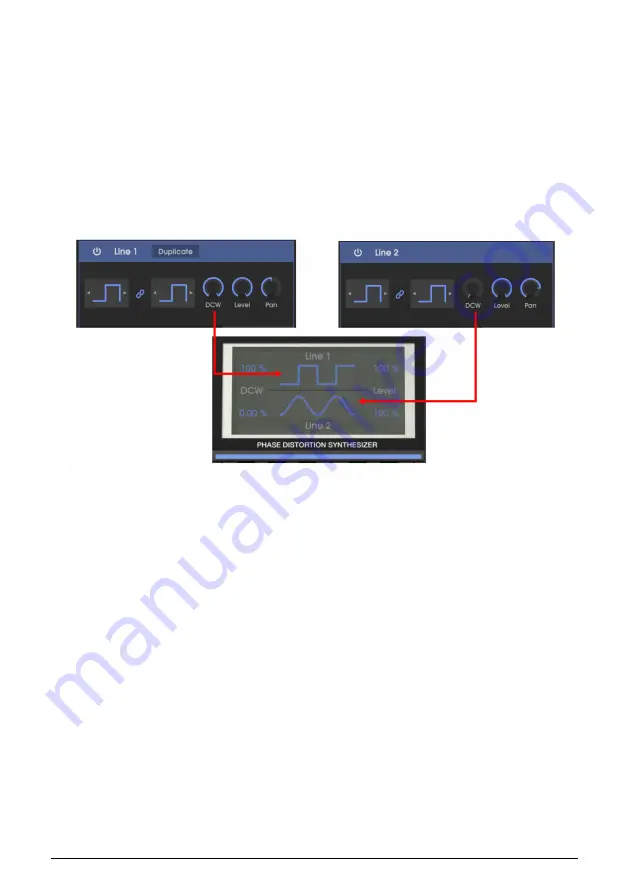
Just to the right of the waveform selection boxes in Line 1, notice the DCW control. Click on
the dark circle and drag upwards.
• Alternatively, you can change the DCW percentages in the output waveform
display by clicking and dragging in each data field; it has the same effect as
turning the rotary controls.
• Double-click either the DCW rotary control or the DCW data field to set it to zero.
As you increase the DCW control, you’ll see the output waveform scope morph from a sine
wave into a square wave. When the DCW control is at maximum, you’ll see the edges of the
square wave are very sharp, and if you play the keyboard, you’ll hear lots of high-frequency
overtones. As you turn the DCW control back down, those high-frequency overtones will
gradually fade. Your waveform can vary from a sine wave to a square wave and anywhere
in between.
That’s why the DCW static level is similar in effect to the filter cutoff knob on a traditional
analog synthesizer. It modulates the waveform’s shape by a constant, fixed amount. You
turn it up to make it sound more and more like the waveforms you chose in the waveform
selection boxes; the higher the DCW level, the more overtones in the sound.
When your cursor is over the DCW control, a text balloon next to the cursor shows the
current numeric level of the control, for example “60.0%”. The current DCW level is also
displayed in the Wave Scope.
4.2.5. DCW Envelope
Click on the DCW box underneath the waveform boxes, between Pitch and AMP, to display
the DCW envelope in the Synthesis window.
The DCW envelope lets you change the sound of the waveform dynamically over time.
When it’s flat (all points at the bottom of the envelope window), the timbre of the sound will
be static and organ-like, with the tone determined by the setting of the rotary DCW control.
When you draw or import an envelope, the sound will change dynamically as you hit a key,
hold, and even after you release it. For example, the sound can start as a sine wave, brighten
up into a square wave during the attack phase, then fade back as if a filter were closing.
Arturia - User Manual CZ V - SYNTHESIS SECTION / TAB
32
Summary of Contents for CZ V
Page 1: ...USER MANUAL ...
















































